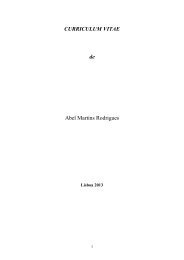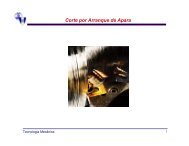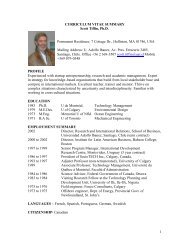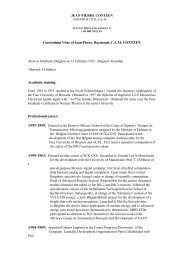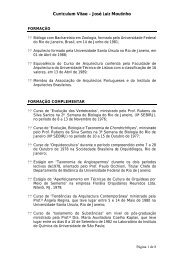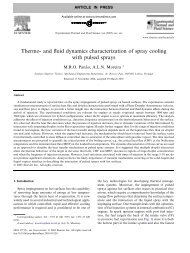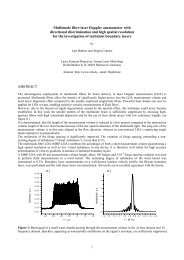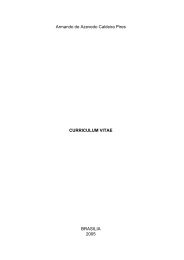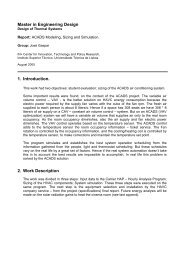download
download
download
Create successful ePaper yourself
Turn your PDF publications into a flip-book with our unique Google optimized e-Paper software.
3. Grid turbulence flow<br />
The experiments were carried out along the centreline of the test section for a mesh Reynolds number Re M of 5500.<br />
2<br />
2<br />
Figure 3 shows the rate of decay of the kinetic energy and of the turbulence intensities u1 U1<br />
and u<br />
3<br />
/ U<br />
1<br />
along the X 1 direction. It is evident that the flow is not perfectly isotropic as the turbulence intensities along axis X 1<br />
and X 3 are not the same. This difference was also present in previous works, such as Comte-Bellot & Corssin<br />
(1966) and Zhou et al. (2000) and wasn’t considered to be significant, as the difference between the rms values in<br />
the two directions is within the accuracy of the LDA system.<br />
2<br />
2<br />
0.01<br />
u i<br />
2<br />
/U1<br />
2<br />
u 1 2 /U 1<br />
2<br />
u 3 2 /U 1<br />
2<br />
1E-3<br />
q 2 /U 1<br />
2<br />
Linear fit<br />
10 20 30 40 50<br />
X 1<br />
/M<br />
Figure 3 Decay of q<br />
2<br />
U<br />
1<br />
2<br />
2<br />
, u<br />
1<br />
U1<br />
and u<br />
2<br />
2 2<br />
3<br />
/ U1<br />
along the duct centre line<br />
As suggested by Mohamed and Larue (1990), the coefficients of the exponential law shown in (8) have been<br />
estimated applying a least-squares linear regression between points belonging to the homogenous and isotropic<br />
region. This is found to begin at a distance of 20 M from the grid. Considering that Mohamed & Larue (1990)<br />
determined that the beginning of the isotropic and homogeneous region is closer to the grid as Re M is decreased,<br />
this value should be considered in good agreement with the others shown in Table 1. The decaying coefficients n<br />
2<br />
found for q U 2 2<br />
, u U 2<br />
2<br />
2<br />
and u / are 1.31, 1.27 and 1.35 respectively.<br />
1<br />
1<br />
1<br />
3<br />
U<br />
1<br />
4. Rate of dissipation for the grid turbulence flow<br />
The direct measurement of the spatial gradients has been carried out between 20 and 35 M for a Re M of 5500.<br />
In Figure 4 the values assumed by f ii (∆x j ) at a distance of 23 M from grid, are plotted against ∆x j 2 for all the<br />
gradients measured. The time coincidence windows τ w applied is of 0.03 ms. All the f ii (∆x j ) have been evaluated<br />
for distances ∆x j between 0-0.7 mm with a step of 0.1 mm.<br />
Considering Figure 4, it can be observed that the values of f ii (∆x i ) for ∆x j 2 > 0 are much higher than for f 11 (0). This<br />
substantial difference has to be attributed to the relatively large dimensions of the control volume. On the one hand,<br />
when the probes are displaced, it is very unlikely that two particles will cross the centre of the two control volumes<br />
at the same time to give a highly correlated pair of velocity values. It is more probable that one of them will pass<br />
through the centre of one control volume while the other will pass far away from the centre of the second control<br />
volume, resulting in a higher distance between the points where the control volumes are crossed than the effective<br />
displacement ∆x j effectuated. This leads to velocity pairs less correlated than expected. On the other hand, when<br />
6



